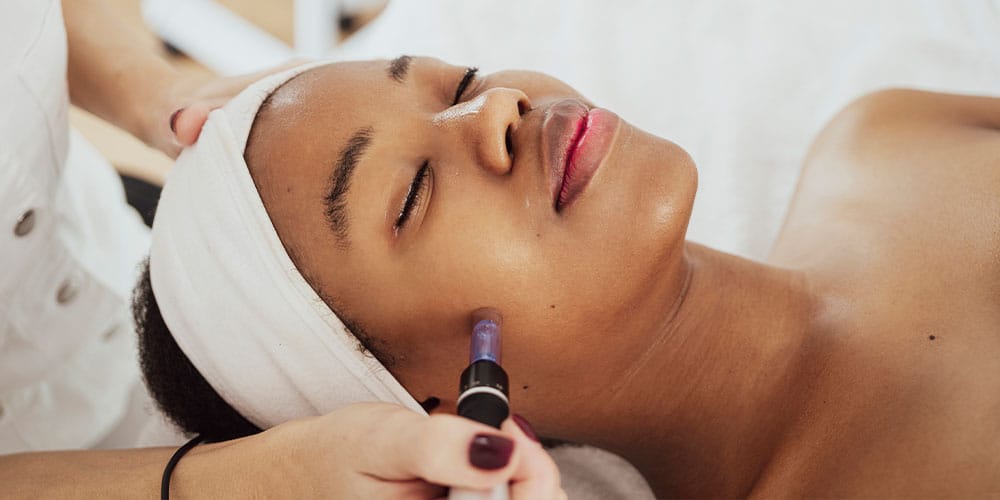Look, Feel & Be Your Best
Start your wellness journey
Book Now
You’ve tried every cream, serum, and home remedy, yet those acne scars still stare back at you in the mirror. They remind you of breakouts long gone, making your skin feel uneven. Unlike temporary blemishes, acne scars can linger for years, refusing to fade no matter how many products you stack on your bathroom shelf.
At Serotonin Centers, we understand how frustrating acne scars can be and how they affect your overall sense of self. That’s why we offer advanced microneedling, an evidence-based treatment that stimulates your skin’s natural repair process to restore smoother, more even texture. In this article, we describe what acne scars are, the different types of scars, how microneedling works, and what you can do to maximize your results.
Acne scars are permanent textural changes in the skin that occur after severe or inflamed acne has healed. Unlike post-inflammatory redness or dark spots, which fade with time, scars form when the skin’s healing process is disrupted or unable to fully repair itself. Instead of returning to its normal smooth state, the skin leaves behind depressions or raised marks.
These scars form because acne lesions, especially cystic ones, penetrate deep into the skin and damage surrounding tissue. When the follicle wall breaks, the body responds by producing collagen to heal the wound. If too little collagen is produced, the skin heals with depressions. If too much collagen forms, the result is a raised scar. The balance of this repair process determines how your skin looks once acne subsides.
Microneedling, also known as collagen induction therapy, is a minimally invasive treatment that utilizes medical-grade needles to create controlled micro-injuries on the skin’s surface. These microchannels stimulate your body’s natural healing response, prompting the production of fresh collagen and elastin. Over time, this process strengthens the skin’s structure, smooths uneven texture, and softens the appearance of acne scars.
When microneedling punctures the skin with tiny, precise channels, it signals the body to enter “repair mode.” Your skin basically treats each micro-injury as if it needs healing, producing new collagen and elastin fibers. This collagen fills in indented scars from the inside out, gradually evening out your surface. As the tissue remodels, scars become less visible, and your skin texture improves, making microneedling especially effective for rolling and boxcar scars.

Microneedling is particularly effective for atrophic acne scars, which include rolling scars, boxcar scars, and, to a certain extent, ice pick scars. These scars form because of a loss of collagen, creating indentations or uneven texture. Since microneedling stimulates collagen production, it helps fill in these depressions over time, resulting in smoother, more even skin.
On the other hand, raised scars such as hypertrophic or keloid scars tend to respond less predictably to microneedling. These are caused by excess collagen rather than a deficiency, so simply stimulating more collagen isn’t always beneficial and can even worsen their appearance. That’s why it’s important to approach acne scar treatment with a comprehensive plan.
At Serotonin Centers, your provider will evaluate your unique scar type and recommend a tailored treatment strategy, often combining microneedling with other modalities, to help you achieve the best possible outcome for your skin.
Microneedling is most effective when performed as a series of treatments rather than a one-time procedure. Sessions are typically spaced 2 to 4 weeks apart to give your skin time to heal and produce new collagen. Most people notice visible improvement after 3 to 6 treatments, though the number of sessions depends on the severity and type of scarring. Regular sessions allow collagen to build gradually, giving you smoother, firmer skin over time.
Acne scars may feel permanent, but with the right treatment, you can take real steps toward smoother, healthier-looking skin. Serotonin Centers specializes in microneedling as part of a comprehensive approach to skin health, helping you rebuild collagen. Schedule a consultation today to learn how microneedling can transform your skin from the inside out.
